There is inherent strength in all of the women she played on screen. I can think of no other female actor in classic Hollywood who is less a damsel in the ‘in distress’ way than Barbara Stanwyck. Even in her most vulnerable roles Stanwyck’s “tough old broad” shines through and a certain determination, a will for survival is ever-present. Richard Schickel once wrote that Stanwyck was the only woman who “built a durable career out of toughness,” a quality that made Stanwyck a standout in the 1930s, a decade during which many actresses were called upon to be and act tough. And Stanwyck outdid them all. But what has – in my opinion – made Barbara Stanwyck one of the most durable and beloved icons of classic Hollywood is that she could take that toughness – underlying or overt – and layer romance and sexiness upon it in a way few others could. Stany could do a cold, withering glare like nobody’s business, deliver cutting jabs in memorable fashion and follow that with sexy in a seamless transition. She could manipulate, dictate, put down and seduce the best of ’em all at the same time. Add to those talents a gift for murder and superb comedic timing and you’re talking about one of the most versatile talents the silver screen has ever featured.
In the inherent strength of a Barbara Stanwyck there is no damsel to be found unless it’s purposefully designed as part of her character’s ruse. And perhaps all of what I’ve mentioned is best illustrated in her performance in Preston Sturges‘ enchanting 1941 romantic comedy, The Lady Eve.

I submit this entry to The Anti-Damsel Blogathon hosted by Movies, Silently and The Last Drive In because Stanwyck delivers in The Lady Eve an anti-damsel to be admired – a woman who does things her way when she wants to – a woman not governed by customs and conventions – a woman who takes command using all of the wiles at her disposal and in the process turns traditional roles on their head.

“You know me. Nothing but reptiles.”
As The Lady Eve opens we see Charles ‘Hopsy’ Pike (Henry Fonda), heir to the Pike Ale fortune – “The Ale That Won for Yale” – leaving a year-long expedition in the Amazon. Pike is an archeologist who studies snakes, who admits “snakes are my life” without a clue that it is in his destiny to spend the rest of his life with one, that he is attracted to them on a visceral level.
Henry Fonda is the perfect Adam (or Charles) to Stanwyck’s Eve (or Jean), the perfect foil to her devilshness in this movie – and the chemistry between the two is fantastic! Fonda brings a brand of naiveté to the table that I don’t think anyone else could muster. And although I never think of Mr. Fonda as a comedic force, he plays it straight here and shines as an innocent, gullible and clumsy leading man. One could argue, in fact, that it’s Fonda’s steadiness, his unwavering reliability that allows Stanwyck to go for it in The Lady Eve. And go for it she does.
Preston Sturges wrote the screenplay of The Lady Eve specifically for Barbara Stanwyck and she delivers BIG time. Miss Stanwyck is non-stop magical from beginning to end. And, I might add, looks stunning in the film costumed for the first time by Edith Head, with whom she would work many more times.
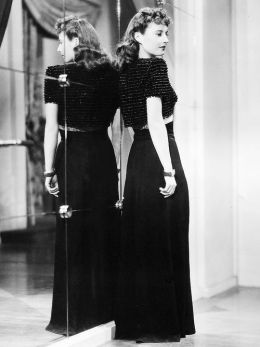

Jean Harrington is a beautiful con artist who along with her father, “Colonel” Harrington (Charles Coburn) makes a living at swindling the rich. The first encounter between Jean and our snake expert Charles happens as he’s stepping onto the ocean liner heading home from the Amazon. Jean, who’s already scoped Mr. Pike as her next victim, drops an apple on his head. The two have no actual exchange at the time, but the scene serves to emphasize the running theme in the movie – Eve tempting with an apple, snakes as biblical connivers and the fall of man to woman – beautifully interwoven within the entertaining story.
When we next see Jean and Charles the latter is sitting in the ship’s dining hall surrounded by women vying for his attention. Jean is across the room looking at the action as reflected in her compact mirror, narrating the goings on and directing what he will probably do next. And he does everything exactly as she says. Another gorgeously orchestrated scene, which serves to show who’s in control of the happenings. From the start and for the rest of the movie it is the lady. And Charles (Hopsy) will soon be putty in her hands.

With expertise Jean trips Charles to get his attention and immediately puts her plan in motion. She works the gullible, young man with the precision of a great musician. Mere moments after they meet her leg is in his hands and his reaction is dizziness and blurred vision – as if he’d been bitten by a snake. Except this snake is lovely and wears perfume – a particularly irresistible combination to a man who’s been in the jungle for a year.

And then we get one of the greatest scenes in romantic comedy history and we see the full power of Jean Harrington on display. Of the scene, Roger Ebert noted, “If I were asked to name the single scene in all of romantic comedy that was the sexiest and funniest at the same time, I would advise beginning at six seconds past the 20-minute mark in Preston Sturges’, The Lady Eve, and watching as Barbara Stanwyck toys with Henry Fonda’s hair in an unbroken shot that lasts three minutes and 51 seconds.” Brilliant in its simplicity the scene is a reminder that stellar acting and writing trump special effects in the making of movie magic. This is all you need – the likes of Stanwyck and Fonda highlighted by the confident camera of a Sturges.
In keeping to the anti-damsel theme I should note that the fantastic scene described above comes on the heels of what is perhaps Jean’s signature, traditional damsel moment. Albeit a carefully calculated one. Pike ends up in her room, on her couch and in her embrace because she ran from his snake. That is, the pet snake he keeps in his cabin. She ran from the reptile with damsel scream and all, but quickly recovers to take control of the situation. You can see from the images (above) that Charles hasn’t a chance in hell.
Having zeroed in on Charles as the mark Jean’s father, “Colonel” Harrington readies to take the rich young man for as much money as he can. In the interim, however, Jean falls in love with the poor fish and foils her father’s plans. Charles asks Jean to marry him, a proposal she accepts, but the morning after her charade is exposed. It turns out that all the while Charles and Jean have been making googly eyes his bodyguard, governess and all around curmudgeon Muggsy (William Demarest) has been suspicious of Jean and her father. Muggsy snoops around and finds out that the “Colonel” is really “Handsome Harry” Harrington a notorious swindler in cahoots with his daughter, Jean. Needless to say the engagement is called off and a disillusioned Hopsy goes home to Connecticut.
To this point in our story Jean has shown she can play with the big boys in the hardened world of cheating gamblers. She has been demure as can be when needed and overtly seductive when it served her best. In short, she has lady-handled Charles Pike expertly and we get the sense it’s not the first time she’s put her moves into play. And now Jean’s soft side is exposed. Her heart is broken. But pain cannot keep an anti-damsel down. Jean bounces back like a trooper with a plan to get back at Charles Pike for dumping her in such a cold a manner. Hell hath no fury like a con artist scorned – “I need him like the axe needs the turkey.”
Enter The Lady Eve…

…and a fantastic twist. With the expertise of a life-long fraud Jean – now as The Lady Eve – manages a convincing, brand-new charade dictating every move to the smallest detail until she can get her own back. She’s confident, strong and determined and there’s no way she can fail. Eve charms her way back into Charles’ life ensuring everyone in his world is enamored with her. Once again, in a brand-new incarnation Jean Harrington is in total control.
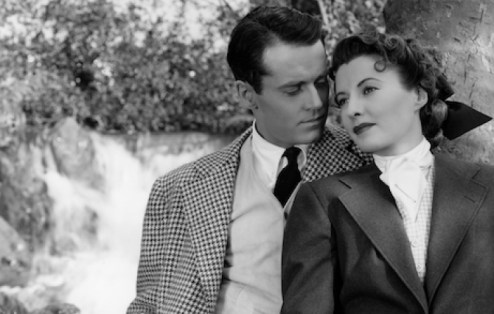
I will not spoil the entire movie, but note that Jean/Eve’s ultimate payback is hilarious and results in yet another memorable scene in this movie. I particularly enjoy the editing and sound effects used in what turns out to be a glorious montage with exceptional acting. It just doesn’t get any better than this.
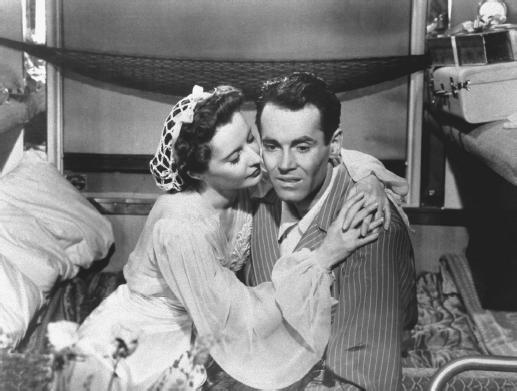
I know I’m being repetitive, but I don’t care. I could go on and on about Barbara Stanwyck’s performance in The Lady Eve – my favorite and in my opinion her best. She pulls out all the stops to create an anti-damsel for the ages. While I do not condone a lifestyle based on cheating and fraud if there’s someone in that world to admire it’s Jean Harrington and her Lady Eve.
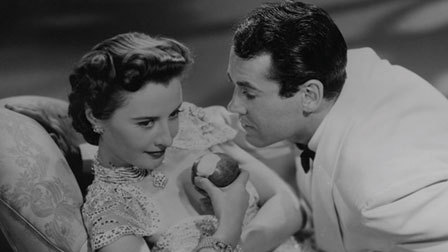
I’d be remiss not to mention the supporting players in The Lady Eve who are among the greatest character actors ever. The aforementioned Charles Coburn is wonderful as the card shark father of our lady Eve. “Handsome Harry” Harrington is as cold a swindler as they come, but has as much class as anyone and stays true to a strict code of ethics reminding his daughter that there’s no need to be vulgar in the swindler’s game, “Let us be crooked, but never common.” Coburn manages an air of superiority and righteous indignation at times despite the character’s profession that add oodles to the entertainment value in the movie.
Also treats are Sturges favorite William Demarest as Muggsy and Eric Blore who plays Sir Alfred McGlennan Keith, another swindler friend of the Harringtons who helps Jean with her ‘The Lady Eve’ charade. And then there’s Eugene Pallette who actually makes me cry laughing as Mr. Pike, Charles’ father. Pallette was some great comedic actor! The scene where Mr. Pike is demanding his breakfast has to be one of the funniest in filmdom.
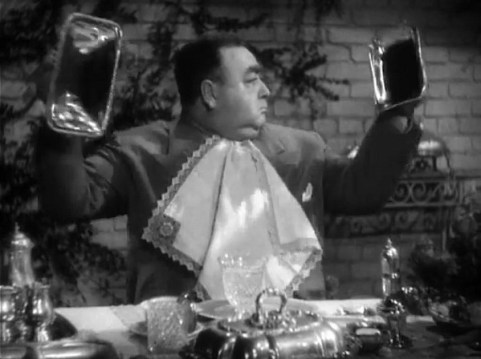
All the players deliver line after line in Sturges’ outstanding script with impeccable timing and wonderful energy. I can’t say enough about The Lady Eve – as far as movies go it’s as perfect as they come. If you haven’t seen it know that you’re missing one of the all-time greats. And I’m not the only one who thinks so.
While The Lady Eve received only one Academy Award nomination for Monckton Hoffe who wrote the original story it was recognized above most other 1941 productions by both the National Board of Review, which nominated it for “Best Picture” of the year and by The New York Times, which named it the best film of 1941. And remember that was the year of Citizen Kane. I can’t help but think that the failure of the Academy to at least recognize The Lady Eve as a top choice for the year is yet another instance of comedies not getting the respect they deserve.
The prestige of The Lady Eve has also grown, in a sense, as time has passed. In 1994 Eve was selected for preservation by the Library of Congress’ National Film Registry and it consistently appears on all-time “best” lists compiled by such entities as the British Film Institute and “Time Magazine.” In other words, The Lady Eve is no fluke. It is not merely an entertaining movie. It is among the smartest, most sophisticated romantic comedies ever made – one of those perfect combinations of story and performances that meld seamlessly…and magically.
◊
“Lux Radio Theater” broadcast a 60-minute radio adaptation of “The Lady Eve” on March 9, 1942 with Stanwyck and Coburn reprising their film roles. To access the complete broadcast or to listen to a number of other Barbara Stanwyck radio performances visit Old Time Radio Magic’s Barbara Stanwyck Radio Page. This would be old-time radio’s equivalent of an anti-damsel-a-thon!
◊
Now you must go visit The Anti-Damsel Blogathon and hosts Movies, Silently and The Last Drive In to read about many more memorable anti-damsels, women who have made a mark in front of the camera and behind the scenes.

◊





What a terrific review. I must watch this again.
Thanks, Vienna! It’s a gem that never loses its luster. 🙂
Thanks so much for joining in with one of my all-time favorite anti-damsels. What Stanwyck does in this movie is incredible and don’t feel even slightly guilty about gushing. It’s only what she deserves. 🙂
My all-time FAVOURITE anti-damsel and a wonderful tribute to a great actress. As you said, there’s so much that’s great about this film that it’s impossible not too feel repetitive when writing about it, but it’s a gem that will never get old. I’m always so cross that the Academy didn’t give it the full love it deserves – I guess that means it’s our job to make sure as many people know about it as possible!
You’ve done a great job capturing what’s so wonderful about Stanwyck. Well done!
Thanks so much, Kelly!
Great review!
Hey, the bad boy trope gets its share of attention for representing morally questionable but nevertheless sexually desirable anti-heroes, why not the bad girl, especially one as alluring as Stanwyck? My goodness, but she’s sexy. Great film. I remember thinking, oh Henry, you are so in over your head. But then again who wouldn’t want’ to be? Now I’m repeating myself. Myst be something in the water. : )
That is one gal you do not shove around! Yes, indeed, she is the epitome of the anti-damsel.
I don’t think Hopsy is as much a “babe in the woods” as some make him out to be. That’s part of Sturges turning romantic comedies on their head and bounding them around. Thank the movie gods for Preston Sturges and Barbara Stanwyck.
Oh, how I love this film! Old Man Pike beating those trays together like a toddler! I agree – one of the funniest scenes ever! Stanwyck shined, as always. I’d spent one weekend watching several of her films – after seeing The Lady Eve, I’d watched Stella Dallas. THAT’S how you define a gifted actress – seeing very two different characters rise to the occasion. She was brilliant!
INDEED!!! Thanks for stopping in, Donna!
God, I love Barbara Stanwyck in this!
I really need to watch this movie again… I almost chose it for the Blogathon. Love the last picture 🙂
I wanted to invite you to my first Blogathon – http://phyllislovesclassicmovies.blogspot.com/2015/08/announcing-they-remade-what-blogathon.html. Hope you can join!!!!
Good essay, Aurora. I always enjoy the way poor Charles takes a beating (apple on the head, tripped) and then winds up Jean’s room for that wonderful scene. I don’t see how anyone could resist her charms in that situation. Barbara Stanwyck must have been the least damsel-like actress in Hollywood, with the possible exception of Marie Dressler.
Ha!! Yes, Marie was a strong hoot! Thanks, Joe!